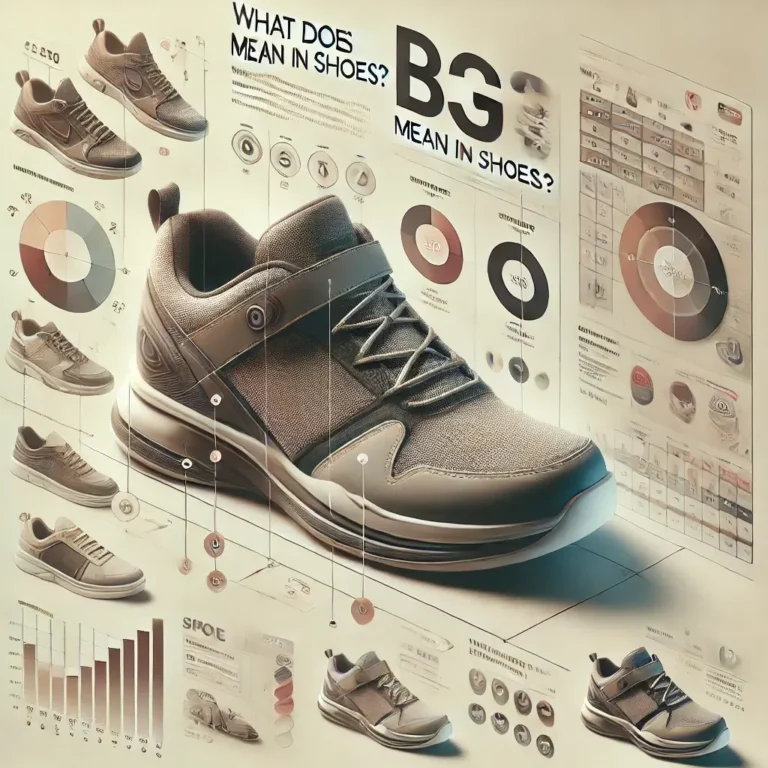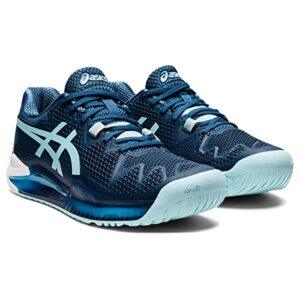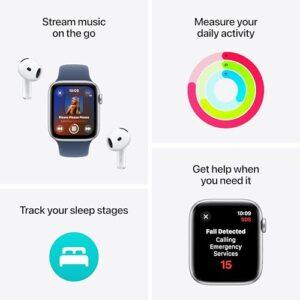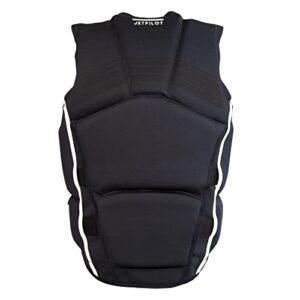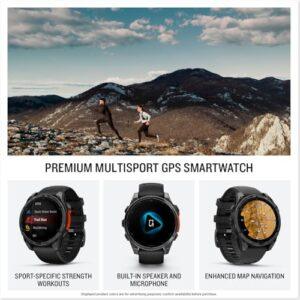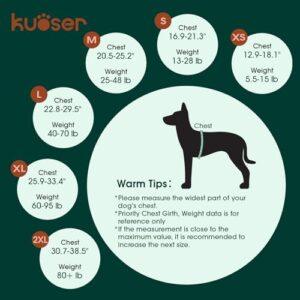“BG” on shoes stands for “Big Kid.” It’s a sizing term.
“BG” typically indicates a larger youth size, commonly used in children’s footwear. When shopping for kids’ shoes, decoding sizing abbreviations can be confusing. You might see “BG” and wonder what it means. These letters are vital, especially when choosing the right size for growing feet.
Understanding these terms ensures a better fit, providing comfort and support for active kids. In this blog post, we’ll explore what “BG” signifies in shoe sizes. We’ll also discuss why knowing this helps in selecting the perfect pair for your child. Get ready to make shoe shopping easier and more informed.
Brief Overview of Shoe Sizing and Labeling
Understanding shoe labels can be confusing. What does “BG” mean in shoes? Knowing shoe sizing and labeling is important. It ensures you buy the right size. Different brands use different labels. This makes it hard to choose the right fit. This guide will help you understand shoe labels and sizes better.
Importance Of Understanding Shoe Labels for Proper Fit
Knowing shoe labels is essential. Proper fit prevents discomfort and injury. Many people ignore this and end up with the wrong size. This can cause blisters, calluses, and even foot pain. Understanding shoe labels can help avoid these issues.
Shoe labels usually have a size number. But this number can vary by brand. For example, a size 9 in one brand might be a size 8 in another. Shoe widths also vary. Some shoes are labeled as narrow, medium, or wide. Knowing these labels helps you pick the right fit.
Here are some common shoe labels and their meanings:
- BG: Boys Grade School
- GS: Grade School
- PS: Preschool
- TD: Toddler
- INF: Infant
Sometimes, shoe labels include width. Here’s a table to help understand width labels:
| Label | Width |
|---|---|
| N | Narrow |
| M | Medium |
| W | Wide |
| WW | Extra Wide |
Choosing the right shoe size is more than just looking at the number. Consider the width and the specific brand’s sizing chart. Always try on shoes before buying. Walk around to ensure a proper fit. Your feet should not feel cramped or too loose.
Remember, feet can swell during the day. Try on shoes in the afternoon for the best fit. Properly labeled shoes can make a big difference in comfort and foot health. Pay attention to these details. Your feet will thank you.
What Does Bg Stand for in Shoes?
When shopping for shoes, you might see the term “BG” on some labels. But what does BG stand for in shoes? This guide will help you understand the meaning of BG and how it fits into different shoe sizing categories.
Definition Of Bg (boys’ Grade or Big Kids’ Grade)
BG in shoes stands for Boys’ Grade or Big Kids’ Grade. It refers to shoe sizes meant for older children, typically between the ages of 6 and 10. This sizing category fills the gap between toddler sizes and adult sizes.
Here are some key points about BG sizing:
- Designed for children who have outgrown toddler sizes.
- Usually covers sizes 3.5 to 7 in the US.
- Can be worn by both boys and girls, despite being labeled as “Boys’ Grade”.
Understanding BG sizing can help you choose the right shoes for your child as they grow. Here’s a table to illustrate the typical BG size range in US shoe sizes:
| Size Category | US Shoe Size | Approximate Age Range |
|---|---|---|
| Toddler | 4-10 | 1-4 years |
| BG (Big Kids) | 3.5-7 | 6-10 years |
| Adult | 8 and up | 10+ years |
Explanation Of How Bg Fits into Shoe Sizing Categories
The BG category bridges the gap between toddler and adult sizes. It provides a smooth transition for kids who are too big for toddler shoes but not ready for adult sizes.
In the US, BG sizes typically range from 3.5 to 7. These sizes are often labeled as “Youth” sizes as well. This means a size 4 in the BG category is the same as a size 4 in youth sizes.
Here are some advantages of BG sizing:
- More variety in styles and designs compared to toddler sizes.
- Better fit for growing feet, offering more support and comfort.
- Often less expensive than adult sizes.
</li>
BG sizes are especially useful for kids who have bigger feet but still need the support and features of children’s shoes. By knowing the BG sizing, parents can make better choices for their growing children’s footwear needs.
Comparison Of Bg with Other Sizing Categories (e.g., Toddler, Youth, Adult)
Understanding how BG compares with other sizing categories can help you find the perfect fit for your child. Here’s a quick comparison:
- Toddler: Sizes range from 4 to 10. Suitable for ages 1 to 4. These shoes are designed for small, developing feet.
- BG (Big Kids): Sizes range from 3.5 to 7. Suitable for ages 6 to 10. Offers more advanced features and styles.
- Youth: Often used interchangeably with BG. Same size range and age suitability.
- Adult: Sizes start from 8 and go up. Suitable for ages 10 and above. Offers a wide range of styles and features.
Here’s a table summarizing the comparison:
| Category | US Shoe Size | Age Range | Key Features |
|---|---|---|---|
| Toddler | 4-10 | 1-4 years | Designed for small, developing feet. |
| BG (Big Kids) | 3.5-7 | 6-10 years | Advanced features and styles. |
| Youth | 3.5-7 | 6-10 years | Same as BG. |
| Adult | 8 and up | 10+ years | Wide range of styles and features. |
By understanding these categories, you can ensure a better fit and more comfort for your child’s feet.
Understanding Shoe Sizing Systems
Understanding shoe sizing systems can be confusing, especially with various terms and categories. One such term is “BG” in shoes. This guide will help you understand what “BG” means, focusing on the U.S. shoe sizing system and how these sizes transition into adult sizes.
Overview Of the U.S. Shoe Sizing System
The U.S. shoe sizing system is one of the most commonly used systems worldwide. It includes sizes for different age groups and foot lengths. Understanding this system helps in picking the right shoe size for comfort and fit. Here’s a quick overview:
- Toddler sizes: For the youngest children, typically ages 1-4.
- Little Kids sizes: For children aged 4-8.
- Big Kids/Boys’ Grade (BG) sizes: For older children, usually aged 8-12.
- Adult sizes: For individuals aged 13 and above.
Shoe sizes in the U.S. are measured in inches, with each size increment representing a 1/3-inch increase in length. Widths also vary, including narrow, regular, wide, and extra wide. This ensures a better fit for various foot shapes.
Breakdown Of Sizing Categories:
Understanding the different sizing categories is essential. Here’s a detailed breakdown:
- Toddler sizes: These sizes start from 2T (two years) and go up to 10. The “T” stands for toddler. These sizes are suitable for children who are just starting to walk.
- Little Kids sizes: These start from 10.5C and go up to 13.5C. The “C” stands for children. These sizes fit children who are more active and need sturdy shoes for play.
- Big Kids/Boys’ Grade (BG) sizes: These sizes start from 1 and go up to 7. “BG” stands for boys’ grade. These sizes are for older children who might be involved in sports and need more support.
- Adult sizes: These sizes start from 8 and go up to 15 or higher. Adults have a wider range of sizes to accommodate different foot shapes and activities.
The table below illustrates the conversion between these categories:
| Category | Size Range |
|---|---|
| Toddler | 2T – 10 |
| Little Kids | 10.5C – 13.5C |
| Big Kids/Boys’ Grade (BG) | 1 – 7 |
| Adult | 8 – 15+ |
How Bg Sizes Transition into Adult Sizes
Transitioning from BG sizes to adult sizes is straightforward. BG sizes overlap with smaller adult sizes, making the shift smooth. For instance, a BG size 7 is roughly equivalent to a men’s size 7 or a women’s size 8.5.
This overlap ensures that as children grow, they can easily find the right shoe size without confusion. Here’s a quick guide to help:
- BG size 1 = Women’s size 2.5
- BG size 2 = Women’s size 3.5
- BG size 3 = Women’s size 4.5
- BG size 4 = Women’s size 5.5
- BG size 5 = Women’s size 6.5
- BG size 6 = Women’s size 7.5
- BG size 7 = Women’s size 8.5
For boys, the transition is usually direct. BG size 7 is equivalent to a men’s size 7. This means boys can continue with the same size designation as their feet grow. Understanding this transition helps in choosing the right shoe size during the growth phase.
Who Are Bg Shoes Designed For?
When shopping for children’s shoes, you might encounter the term “BG.” But what does BG mean in shoes? BG stands for “Big Kid,” a category designed to fit the unique needs of growing children. Who are BG shoes designed for? Let’s explore this in detail.
Age Range for Bg Shoes (typically 7-12 Years Old)
BG shoes are typically designed for children aged 7 to 12 years. This age range covers a crucial period in a child’s development. During these years, children experience rapid growth and development, making it essential to choose the right footwear.
Here are some key points to consider for this age range:
- Growth Spurts: Children in this age group often go through growth spurts, requiring frequent shoe size updates.
- Active Lifestyle: Kids aged 7-12 are usually very active, participating in various sports and outdoor activities.
- Style Preferences: At this stage, children start to develop their style preferences, looking for shoes that are both functional and stylish.
Understanding the age range for BG shoes helps parents select the right size and style for their growing children.
Physical Characteristics of Children in This Age Group
Children aged 7-12 have specific physical characteristics that should be considered when choosing BG shoes. These characteristics include:
- Rapid Growth: Children’s feet grow quickly in this age range, often increasing by a full size every few months.
- Bone Development: Their bones are still developing, requiring shoes with proper support to avoid long-term issues.
- Activity Level: High energy levels mean they need durable shoes that can withstand wear and tear.
A table to summarize these characteristics:
| Characteristic | Importance |
|---|---|
| Rapid Growth | Frequent size updates needed |
| Bone Development | Requires proper support |
| Activity Level | Durability is crucial |
Recognizing these physical traits ensures that you choose BG shoes that provide comfort and support for your child’s active lifestyle.
Importance Of Proper Fit for Growing Feet
The importance of a proper fit for growing feet cannot be overstated. Ill-fitting shoes can lead to various problems, including discomfort, blisters, and long-term foot issues.
Here are some reasons why a proper fit is crucial:
- Foot Health: Properly fitting shoes support healthy foot development and prevent deformities.
- Comfort: Well-fitted shoes provide comfort, allowing children to engage in activities without pain.
- Performance: Shoes that fit correctly improve balance and performance in sports and other activities.
To ensure a proper fit, consider the following tips:
- Measure Regularly: Measure your child’s feet every few months to keep up with their growth.
- Try Before Buying: Always have your child try on shoes before purchasing to ensure they fit well.
- Check for Space: Ensure there is enough space (about a thumb’s width) between the longest toe and the end of the shoe.
Ensuring a proper fit for growing feet is essential for your child’s comfort and overall foot health.
Sizing And Fit
Understanding shoe sizing and fit can be confusing, especially with various abbreviations like “BG” in shoes. This term often refers to sizing categories and can impact how a shoe fits. Let’s delve into the details of finding the right size and fit considerations to ensure optimal comfort and performance.
Finding The Right Size
Finding the right shoe size is crucial for comfort and foot health. Shoes labeled with “BG” often stand for “Boys Grade” and are typically used in children’s shoe sizes. Here’s how you can determine the correct size:
- Measure your foot length: Use a ruler or measuring tape to measure the length of your foot from heel to toe.
- Refer to size charts: Most brands provide size charts that convert foot length to the appropriate shoe size. Look for charts that specify “BG” sizes.
- Consider width: Feet come in different widths. Some brands offer shoes in various widths, so check if “BG” shoes come in narrow, regular, or wide options.
Here is a simple size conversion table for reference:
| Foot Length (inches) | BG Shoe Size |
|---|---|
| 7.75 | 1 |
| 8.125 | 2 |
| 8.5 | 3 |
| 8.75 | 4 |
| 9 | 5 |
Try on shoes in the afternoon: Feet tend to swell throughout the day. Trying on shoes in the afternoon ensures you get a size that fits comfortably even when your feet are at their largest.
Wear the same type of socks: Always wear the same type of socks you plan to use with the shoes when trying them on. This affects how the shoe fits and feels.
Fit Considerations
Once you have the right size, consider the fit. A good fit ensures comfort and prevents foot issues. Here are key fit considerations:
- Toe room: Ensure there is enough space for your toes to move. There should be about a thumb’s width between your longest toe and the end of the shoe.
- Heel fit: The heel should fit snugly without slipping. A slipping heel can cause blisters and discomfort.
- Arch support: Check if the shoe provides adequate arch support. Proper arch support helps prevent foot strain and provides stability.
- Flexibility: The shoe should bend easily at the ball of the foot. This ensures natural movement and comfort.
- Breathability: Look for shoes made of breathable materials. This keeps your feet cool and dry, reducing the risk of odor and infections.
If you experience discomfort, try different brands or styles. Each brand may have slight variations in sizing and fit. Remember, a well-fitting shoe should feel good the moment you put it on. It should not require a break-in period to be comfortable.
For those with specific foot issues, consider consulting a podiatrist. They can provide personalized advice and recommend shoes that cater to your needs. Always prioritize comfort and support over style to keep your feet healthy.
Popular Shoe Brands and Their Bg Sizing
Understanding shoe sizes can be tricky, especially with terms like “BG.” In the shoe industry, “BG” stands for “Boys Grade School.” This sizing is specifically for older kids. It’s important to know which brands offer BG sizes to ensure a proper fit. Let’s dive into some popular shoe brands and their BG sizing.
Overview Of Major Brands Offering Bg Sizes (e.g., Nike, Adidas, New Balance)
Several major brands offer BG sizes. These sizes cater to older children, usually between the ages of 8 and 12. Here are some of the top brands that provide BG sizes:
- Nike: Nike is a well-known brand that offers a wide range of BG sizes. Their BG shoes are designed for both style and comfort. They often feature the latest technology to support growing feet.
- Adidas: Adidas is another popular brand that offers BG sizes. Adidas shoes are known for their durability and trendy designs. They provide excellent support for active children.
- New Balance: New Balance offers BG sizes that focus on comfort and support. Their shoes are perfect for children who need extra cushioning and stability.
Each brand has its unique approach to BG sizing. This ensures a variety of choices for different preferences and needs.
Variations In Sizing Between Brands
While many brands offer BG sizes, their sizing can vary. Understanding these variations is crucial for finding the right fit. Here’s a comparison of BG sizing between popular brands:
| Brand | Size 4 BG (US) | Size 5 BG (US) | Size 6 BG (US) |
|---|---|---|---|
| Nike | 22.5 cm | 23.5 cm | 24 cm |
| Adidas | 22 cm | 23 cm | 24 cm |
| New Balance | 22.3 cm | 23.2 cm | 24.1 cm |
As seen in the table, Nike and Adidas have slight differences in their sizing. New Balance falls in between. It’s essential to check the specific measurements for each brand. This ensures the best fit for your child’s feet.
Recommendations For Finding the Best Fit
Finding the best fit for BG shoes involves several steps. Here are some recommendations to help:
- Measure your child’s feet: Use a ruler or a measuring tape. Measure both feet as they might differ in size.
- Check brand-specific size charts: Look at the size charts provided by each brand. Compare the measurements to find the right size.
- Consider the shoe type: Different shoes have different fits. For example, running shoes might need a snug fit, while casual shoes can be slightly loose.
- Read reviews: Customer reviews often provide insights into the fit and comfort of the shoes. Pay attention to comments about sizing.
- Try shoes on: If possible, have your child try the shoes. Ensure there is enough room for their toes to move comfortably.
By following these steps, you can find the best fitting BG shoes for your child. This ensures comfort and support for their growing feet.
Differences Between Bg and Other Sizing Categories
In the world of shoe sizing, “BG” is a term that can confuse many. It often appears on shoe labels and online stores. Understanding what “BG” means is crucial for finding the right fit. This guide will explain the differences between BG and other sizing categories. Let’s dive in!
What Does Bg Stand For?
BG stands for “Big Grade School.” This sizing is for older kids, usually between the ages of 8 and 12. It’s common in athletic shoes, especially from brands like Nike and Adidas. BG sizes range from 3.5 to 7. They are larger than toddler sizes but smaller than adult sizes.
Comparison With Other Sizing Categories
| Sizing Category | Age Range | Size Range |
|---|---|---|
| BG (Big Grade School) | 8-12 years | 3.5 – 7 |
| TD (Toddler) | 1-3 years | 0 – 10 |
| PS (Preschool) | 3-5 years | 10.5 – 3 |
| Adult | 13+ years | 8 and up |
How Bg Differs from Adult Sizing
BG sizes are specifically designed for growing feet. They offer more flexibility and support. Adult sizes, on the other hand, focus on durability and style. BG shoes often feature vibrant colors and designs that appeal to kids.
Shopping Tips For Bg Sizes
- Always measure your child’s foot before buying.
- Check the brand’s size chart for accuracy.
- Look for shoes with adjustable straps or laces.
- Read reviews to see if the sizes run small or large.
Understanding the differences between BG and other sizing categories helps you make informed choices. It ensures that your child’s shoes fit well and provide the necessary support. Happy shopping!
Why Bg Sizing Matters?
Introduction paragraph about What Does Bg Mean in Shoes? and Why BG Sizing Matters? BG in shoes refers to “Big Kid” sizing. This sizing is essential for growing children. It ensures the shoes fit well and are comfortable for active kids. Understanding BG sizing can help you choose the right pair for your child’s needs.
Correct shoe sizing is crucial for foot health. BG sizing ensures that children get the right fit as they grow. This helps in preventing foot problems and discomfort. Let’s explore why BG sizing is important for your child’s footwear.
Comfort And Fit
Children’s feet grow quickly. Shoes that fit well provide better comfort. BG sizes are designed to accommodate this growth. A proper fit reduces the risk of blisters and other foot issues.
Support And Stability
Good shoes offer support and stability. BG-sized shoes have features that support growing feet. This includes arch support and cushioning. Proper support helps in the development of healthy feet.
Durability
Children are active. They need durable shoes. BG-sized shoes are made to withstand this activity. Quality materials ensure the shoes last longer. This means fewer replacements and better value.
Style And Variety
BG sizes come in many styles. This variety allows children to express their personality. From sports shoes to casual wear, there is something for every taste. Stylish shoes boost confidence and self-esteem.
| Feature | Benefit |
|---|---|
| Comfort | Reduces foot pain and blisters |
| Support | Helps in healthy foot development |
| Durability | Lasts longer, better value |
| Style | Boosts confidence |
Choosing The Right Size
Measuring your child’s feet is important. Use a sizing chart to find the correct BG size. Measure both feet, as they can be different sizes. Choose the size that fits the larger foot. This ensures the best fit and comfort.
Tips For Parents Shopping for Bg Shoes
Understanding what ‘BG’ means in shoes is crucial for parents. BG stands for ‘Big Grade School’ and refers to shoe sizes for older children. Shopping for BG shoes can be challenging, but with the right tips, parents can find the perfect fit for their kids. Below are some practical tips to help parents make informed decisions while shopping for BG shoes.
1. Measure Your Child’s Feet
Before buying BG shoes, measure your child’s feet. Use a ruler or a foot measuring tool. This helps to get the accurate size. Measure both feet because one foot can be larger than the other. Always choose the size that fits the larger foot.
2. Understand Shoe Sizes
BG shoe sizes can vary between brands. Refer to the brand’s size chart. Ensure you understand the difference between US, UK, and EU sizes. This helps avoid buying the wrong size.
3. Prioritize Comfort
Comfort is key for growing children. Look for shoes with cushioned insoles and good arch support. Ensure the shoe material is breathable. Avoid shoes that are too tight or too loose.
4. Check For Durability
Children are active. They need shoes that can withstand daily wear and tear. Check the shoe’s construction. Look for reinforced stitching and strong materials. This ensures the shoes last longer.
5. Consider The Shoe’s Purpose
Think about where your child will wear the shoes. Are they for school, sports, or casual wear? Choose the appropriate type. For sports, pick athletic shoes. For school, look for comfortable and stylish options.
6. Involve Your Child
Let your child be part of the decision-making. This ensures they like the shoes. It also helps them learn how to choose the right shoes in the future. Ask for their preferences on color and style.
7. Shop At Trusted Stores
Purchase from reputable stores. They offer quality products and have a good return policy. This is useful if the shoes do not fit well. Look for stores that specialize in children’s shoes.
8. Take Advantage Of Sales And Discounts
Keep an eye out for sales and discounts. This can help you save money. Sign up for newsletters from your favorite stores to stay informed about upcoming sales.
9. Inspect The Shoes Regularly
Check your child’s shoes regularly for wear and tear. Replace them if they are worn out. This ensures your child’s feet are always well-supported and comfortable.
10. Educate Your Child
Teach your child about the importance of good footwear. Explain why proper fit and comfort matter. This helps them make better choices as they grow older.
| Tip | Description |
|---|---|
| Measure Your Child’s Feet | Use a ruler or foot measuring tool for accurate size. |
| Understand Shoe Sizes | Refer to the brand’s size chart and understand size differences. |
| Prioritize Comfort | Look for cushioned insoles and breathable materials. |
| Check for Durability | Choose shoes with reinforced stitching and strong materials. |
| Consider the Shoe’s Purpose | Choose based on where and how the shoes will be used. |
| Involve Your Child | Let them pick their preferred style and color. |
| Shop at Trusted Stores | Buy from reputable stores with good return policies. |
| Take Advantage of Sales and Discounts | Save money by shopping during sales and using discounts. |
| Inspect the Shoes Regularly | Replace worn-out shoes for continued support and comfort. |
| Educate Your Child | Teach them the importance of proper footwear. |
Frequently Asked Questions
What Does Bg Mean in Shoes?
BG in shoes stands for “Big Grade. ” It refers to youth sizes for older kids. These sizes typically range from 3. 5 to 7.
Are Bg Shoes Different From Adult Sizes?
Yes, BG shoes are smaller than adult sizes. They are designed specifically for older children, offering a better fit for their growing feet.
Can Adults Wear Bg Shoes?
Some adults with smaller feet can wear BG shoes. They often find them more affordable and suitable for their size.
How Do Bg Shoe Sizes Compare To Women’s Sizes?
BG shoe sizes are similar to women’s sizes. For example, a BG size 7 is roughly equivalent to a women’s size 8. 5.
Conclusion
Understanding the term “BG” in shoes helps you make informed choices. It often indicates a youth size, bridging the gap between kids and adults. This knowledge ensures a better fit and comfort for growing feet. Always check specific brand sizing charts to avoid confusion.
Happy shoe shopping!
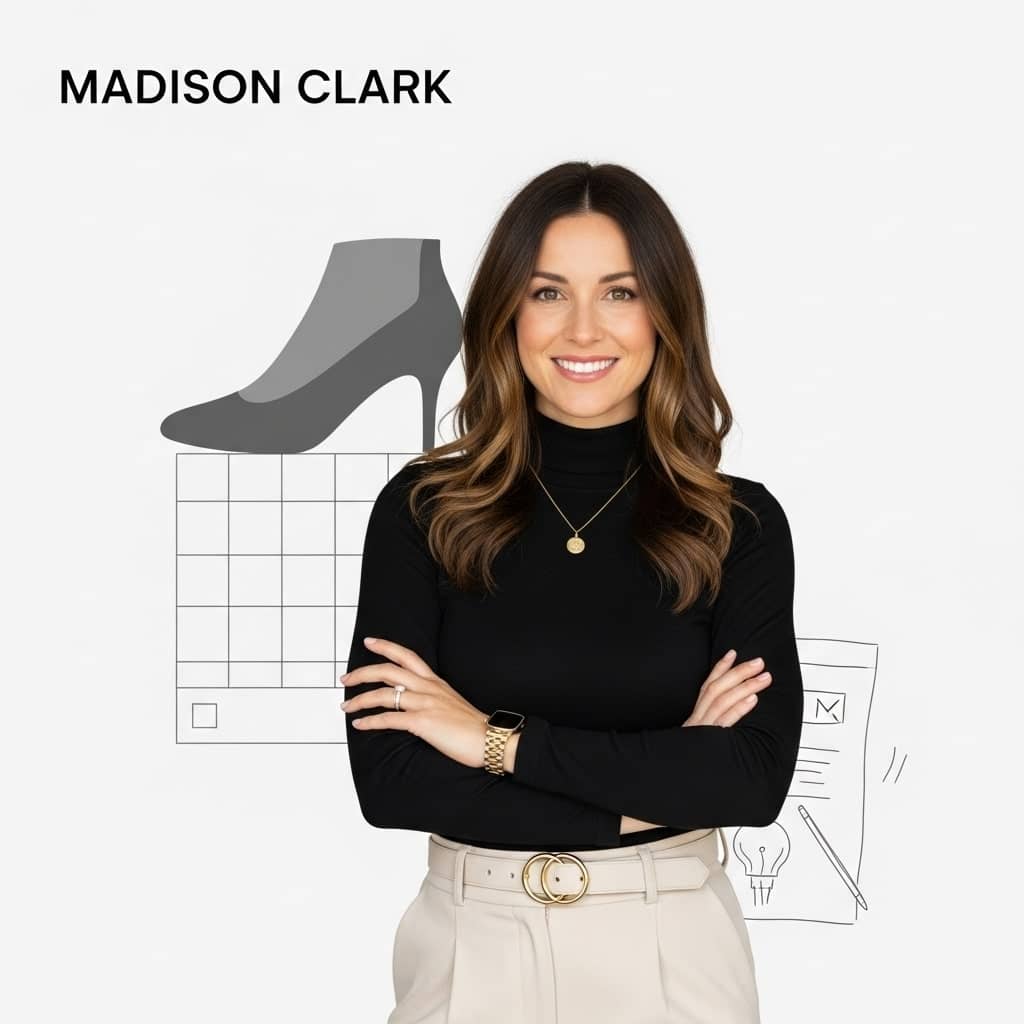
Madison Clark is a footwear expert and the voice behind MyStyleGrid.com. She specializes in honest shoe reviews, style tips, and practical guides to help readers find the perfect pair for any occasion. With years of experience in blogging and content creation, Madison makes footwear knowledge simple, stylish, and easy to follow.

